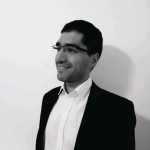Feedback on the implementation of enterprise architecture as part of a digital transformation
We offer feedback on the implementation of enterprise architecture as part of a digital transformation. The major issues were:
• master the complexity of systems,
• define the integration of a complete system from on-board to the information system
• apply the CESAMES framework with a modeling language
• ensure simultaneous co-construction of cross-functional architectures between the business/system and the IS
• make the link between the architecture and execution of Agile projects at scale: SAFe.

Stephane DUTOT
Architecte Innovation Digital
Safran Helicopter Engines

Fabien LAMAZERE
Systems architect
Safran Helicopter Engines
Application of MBSE at ArianeGroup, experience feedback
This paper presents a status of the deployment of the MBSE at Ariane group. By MBSE, we mean the digitalization of Systems Engineering. It will be illustrated with some applications on the Ariane 6 program. In this paper, we will focus on the following MBSE uses : CONOPS, architectures, and engineering data management. We will first identify the challenges of the development of an heavy launcher program like Ariane 6, that can benefit from the deployment of MBSE, but also which makes it a challenge to deploy. Then we will present some achievements we reached and difficulties we indeed faced. We will conclude with a status on other uses of MBSE on-going at AGS.

Kamal KAMECHE
Head of System Engineering Solutions
ArianeGroup
MBSE: Past developments and future challenges
Model-Based Systems Engineering (MBSE) has significantly evolved over the past 15 years, transforming the way industries approach complex systems design and management. In this presentation, Adrien Roques will share invaluable insights drawn from extensive collaboration with industrial clients, highlighting key trends in MBSE adoption, methods, frameworks, and tools. By reflecting on successes and challenges observed in diverse sectors, the talk will provide a comprehensive overview of the state of MBSE today. Looking ahead, Adrien Roques will explore emerging trends, innovations, and opportunities poised to shape the MBSE landscape over the next decade, offering a strategic vision for practitioners and organizations.

Adrien ROQUES
CTO
CESAMES
AI-Driven model generation for assisted compliance analysis : Application to a nuclear facility
In the complex and highly regulated environment of nuclear facility projects, ensuring compliance with extensive safety and regulatory standards is paramount. This paper presents an AI-driven model generation approach aimed at assisting compliance analysis within these projects. Leveraging advanced systems engineering methodologies, our approach integrates augmented engineering tools to enhance the efficiency and accuracy of compliance assessments. By utilizing a combination of Model-Based Systems Engineering (MBSE) and artificial intelligence, we demonstrate a significant reduction in time spent on regulatory compliance tasks.
Our methodology involves the deployment of large language models (LLMs) to automate the allocation of requirements within a nuclear project’s product breakdown structure, followed by a rigorous self-evaluation process to assess the accuracy and relevance of the AI-generated allocations. The results, based on case studies involving Uranium and Plutonium Mixed Oxide Fuel Fabrication Facilities, highlight both the potential and limitations of AI in this domain. While the AI Copilot shows promise in providing exhaustive results and initializing complex compliance analyses, it also underscores the necessity for human oversight to validate and refine AI outputs.
This research underscores the importance of integrating AI with traditional engineering practices to improve the management of nuclear projects, ultimately aiming to enhance safety, reduce project timelines, and ensure regulatory compliance. Future work will focus on refining the AI algorithms and expanding their application across different types of nuclear facilities and other highly regulated industries.

Julien RODRIGUEZ
Machine Learning Engineer
Assystem
Generative Systems for Software-Intensive Experiences – State of the Art & Next Challenges
Model-Based Systems Engineering (MBSE) practices, traditionally used by Systems Architects during the conceptual phase of complex products in the Aerospace & Defense industry, are now gaining significant momentum across multiple industries in Automotive, Infrastructure, and Healthcare to deliver software-intensive products. These MBSE practices are also increasingly used across the entire lifecycle of products & services, from mission engineering to operation & support, enabling Virtual Twin Experiences.
MBSE is emerging as a pivotal enabler for end-to-end processes, spanning architecture, hardware and software integration, and virtual testing and validation. The integration of electrical and electronics (E/E), safety, and cybersecurity domains into a unified and consistent model-based approach is becoming increasingly crucial to delivering smarter and safer End User Experiences.
Emerging technologies, such as generative Artificial Intelligence leveraging large language models, and new modeling languages, like SysML V2, under specification finalization, are also gaining much attention.
How will they accelerate the adoption of MBSE practices?

Olivier SAPPIN
CATIA CEO
Dassault Systèmes
Verification & Validation Process to Ariane 6 first flight success
ArianeGroup is the industrial architect for Ariane European launchers. Latest version, the Ariane 6 heavy launcher, successfully flown for first time on the 9th July 2024. The keynote will explain the different steps followed to verify the design and demonstrate compliance up to qualification and go for flight. For such a complex system, V&V is a key process to minimize the risk of errors. Consequently ArianeGroup has developed and deployed dedicated methods and tooling to support major Space Programmes since decades. The presentation will share key figures and challenges from Ariane 6 return of experience and will propose some success factors.

Vincent COIPEAU
Head of Civil Launch System Development
ArianeGroup
Verification of Behavioral SysML Models: A Formal Methods Approach
The 2018 Digital Engineering strategy from the US Department of Defense laid out a plan for digital engineering adoption, focusing on model-based methods for complex system design. While current practices meet some DoD objectives, there’s room for improvement in ensuring model trust through verification. This study demonstrates behavioral verification using model checking, SysML model transformation, and an abstraction technique to scale up for larger systems. Verification via a heat pipe case study showed the effectiveness of model checking and abstraction in ensuring system model compliance with specifications.

Ibukun PHILLIPS
Systems Engineer and Research Associate
Purdue University
An Implementation Method of SysML System Modeling Tool for Web
The method proposed in this paper is mainly based on Eclipse GLSP architecture. Firstly, the main part of the tool supporting SysML basic modeling ability in Web environment is designed and implemented, and the server, the client and the interface communication of end to end are designed and implemented in detail. In order to improve the tool’s support for SysML model persistence, this paper designs and implements an extensible model persistence scheme that supports multiple data sources, and gives the model mapping relationship between relational database and graph database respectively. At present, this method has implemented a SysML modeling tool, AVIC Digital ModSim which is under Web environment. AVIC Digital ModSim supports basic SysML modeling operations, which has a data sources switchable model persistence solution and supports multi-user collaborative modeling.

Hongxin JI
Systems Engineer
AVIC Digital Corporation
A Novel Approach to Simulation Model Reuse in SysML: Industrial Applications and PLE Methodologies
Nowadays, complex systems in industries such as aerospace, railway, or automotive are developed through Model-Based Systems Engineering (MBSE). This methodology results in the creation of numerous interlinked development artifacts. However, projects often undergo similar cycles and generate similar artifacts, leading to redundant efforts across different lifecycle phases and different projects. This redundancy can be reduced if development artifacts are reused in multiple projects and various lifecycle phases. This work focuses on the reuse of library elements in both SysML models for specification purposes and simulation models and the reuse of architectures specified in SysML to create simulation models efficiently. To make such a reuse possible, a concept is developed. For this reason, the research explores the extent to which Product Line Engineering (PLE) methods can be applied to generate efficiently various architectures reusing the components of the asset library and to compare the architectures by performing simulations. To demonstrate its validity, the proposed concept is applied in an industrial context.

Heinrich WAGNER
Research assistant and doctoral candidate
Munich University of Applied Sciences
Dual-Interaction Adversarial Experiment Model for Robustness Analysis of Complex Systems
Simulation experiments often explore the behavioral space of a system by sampling designs and scenarios under a predefined experiment design. Such experiments provide useful information about the interactions among system parameters while ignoring emergent and evolving results that can be used to reframe the experiment dynamically. This paper explores the concept of an adversarial self-organizing experiment strategy to enable dynamic updating of both the design and the scenario space as simulation experiments unfold. The co-evolutionary process and its underlying dual-interaction activation dynamics between the system design and scenario spaces demonstrate the potential for revealing robust designs and scenarios that effectively stress such designs.

Levent YILMAZ
Professor
Auburn University
Modelling Decision Factors for Informed Design Decision Making at the Portfolio Level in Complex Systems Development
In organizations manufacturing complex systems, design decisions serve as the basis for overall system development. These design decisions span across the organization’s entire portfolio, incorporating many different decision factors covering market drivers to product component selection, which makes these decisions complex and multifaceted. In view of making informed decisions, a comprehensive understanding of these influencing decision factors is required. Currently there are very few works available presenting a comprehensive list of factors and none of them presents a model that closely depicts the decision situation in practice. Additionally, available models lack explicit guidance for navigating such situations. To address this, we identify the different decision factors influencing design decisions at the portfolio level and model them to support making informed decisions. These decision factors are identified via a case from a hi-tech company in The Netherlands and the model is presented from the viewpoint of the decision maker (typically a Systems Engineer (SE)) and also as that of a researcher aiming to analyze such situations.

Sherly A. DENIS
PhD Student
University of Twente
Factors for quality decision-making in high-tech system design according to industry experts
High-tech system design is filled with decisions of high uncertainty and complexity, making balancing and trade-offs difficult, and possibly leading to rework and high costs. This work is part of a project aimed at improving decision- making in systems engineering in the context of high-tech industry and looks at the factors important for the quality of decisions. We conducted a survey in which 93 respondents ranked predefined factors from previous discussions, added missing factors, and removed those that they thought irrelevant. All respondents were experts from a company specialized in semiconductor manufacturing equipment from the Netherlands. We defined 12 categories of factors based on the survey results. Experts think that quality decision-making necessitates alignment with all of the decision’s internal and external stakeholders, and benefits most from knowledge about the system. We show that systems engineering decision-making can be approached similarly to business and operations decisions, but requires a different focus.

Jan A. LENSSEN
PhD Student
University of Twente